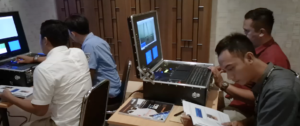Unlocking Safety: A Guide to Event Security Video Analysis
In today’s fast-paced world, ensuring the safety and security of attendees at events has become paramount. With the advent of advanced technology, event organizers now have access to powerful tools to enhance security measures. One such tool is video analysis, which can provide valuable insights into potential threats and incidents. In this guide, we’ll explore how to effectively conduct event security video analysis to bolster safety measures and protect attendees.
Understanding the Importance of Event Security Video Analysis
Why Video Analysis Matters
Events, whether they are conferences, concerts, or sporting events, attract large crowds, making them potential targets for security threats. Video analysis allows event organizers to monitor activities in real-time, identify suspicious behavior, and respond swiftly to potential incidents. By leveraging video footage, security teams can enhance situational awareness and mitigate risks effectively.
Key Benefits of Video Analysis in Event Security
- Proactive Threat Detection: Video analysis algorithms can detect anomalies and suspicious activities, enabling security personnel to intervene before situations escalate.
- Efficient Incident Response: With video analysis, security teams can quickly locate and assess incidents, allowing for prompt response and resolution.
- Enhanced Post-Event Analysis: After the event, reviewing video footage can provide valuable insights for improving future security protocols and optimizing resource allocation.
How to Conduct Event Security Video Analysis
Establish Clear Objectives
Before diving into video analysis, it’s essential to define your security objectives. Identify potential threats specific to your event and establish parameters for what constitutes suspicious behavior. This will guide your analysis efforts and ensure focus on relevant areas.
Choose the Right Technology
Selecting the appropriate video analysis technology is crucial for effective event security. Look for solutions that offer features such as real-time monitoring, motion detection, and facial recognition. Consider the scalability of the system to accommodate the size and complexity of your event.
Implement Comprehensive Surveillance
Strategically deploy surveillance cameras in key areas of the event venue, including entry points, crowd gathering areas, and high-traffic zones. Ensure proper coverage for maximum visibility and consider factors such as lighting conditions and camera angles to optimize video quality.
Utilize Intelligent Algorithms
Modern video analysis systems utilize advanced algorithms to analyze footage and detect potential threats. Configure the system to flag suspicious activities, such as unauthorized access, crowd disturbances, or abandoned objects. Fine-tune parameters to minimize false positives and maximize accuracy.
Train Security Personnel
Provide comprehensive training to security personnel on utilizing video analysis tools effectively. Ensure they understand how to interpret alerts, navigate the interface, and coordinate responses based on the information provided by the system. Regular drills and simulations can reinforce procedures and enhance readiness.
Continuously Monitor and Evaluate
Event security is an ongoing process, requiring constant vigilance and adaptation. Continuously monitor video feeds throughout the event duration and remain alert to potential security threats. Conduct post-event reviews to assess the effectiveness of video analysis tools and identify areas for improvement.
Conclusion
In an era where security concerns loom large, event organizers must leverage every available resource to safeguard attendees. Video analysis offers a powerful means of enhancing event security by providing real-time insights and proactive threat detection capabilities. By following the steps outlined in this guide and embracing the latest technologies, event organizers can effectively conduct event security video analysis, ensuring a safe and secure environment for all participants.


